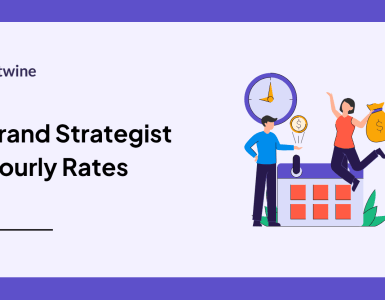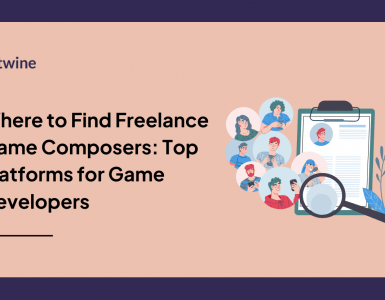Ask ten store owners what they spent working with eCommerce developers to launch their online shop and the answers will ping-pong from “a couple hundred bucks” to “more than my first house.” That spread is maddening when all you want is a concrete number to plug into a budget spreadsheet. While no two stores share the exact same price tag, the building blocks and the price ranges are surprisingly consistent. This guide breaks down every major cost factor, sprinkles in real-world examples, and offers practical tips so you can make smart, wallet-friendly decisions.
The Short Answer: It Depends (But Let’s Pin Down a Range)
At the low end, a scrappy entrepreneur can spin up a template-based store on a hosted platform like Shopify for roughly $500–$3,000 in first-year costs. On the high end, a feature-heavy, fully custom storefront built on Magento or a headless setup can climb past $150,000 before you add a single product photo. Most small to midsize businesses land between $5,000 and $30,000, with the bulk of that money hitting design, development, and marketing integrations.
Why the huge gap?
Every store has its own mix of products, traffic goals, and back-office complexity. Selling three T-shirts to a niche fandom is a different beast from handling worldwide vinyl drops for an indie label or shipping temperature-sensitive cosmetics. As needs stack up, so do costs. Let’s unpack the line items one by one.
Key Cost Factors You Can’t Ignore
Pricing an eCommerce site is less like buying a laptop and more like buying a used car: sticker price matters, but so do the extras hiding under the hood. These six drivers have the biggest impact on your bottom line:
- Platform choice – Hosted (Shopify, BigCommerce) versus self-hosted (WooCommerce, Magento) dictates licensing fees, hosting bills, and developer requirements.
- Design & user experience – Template tweaks are cheap; a bespoke brand experience with UX testing is not.
- Functionality – Think subscriptions, multi-currency, loyalty programs, B2B portals, or complex product configurators.
- Third-party integrations – ERP, CRM, and marketing automation tools often require custom middleware or premium plugins.
- Content & catalog size – More SKUs mean more data imports, photography, copywriting, and ongoing SEO work.
- Maintenance & scaling – Traffic growth, security patches, and new features keep the meter running long after launch day.
Breakdown of Typical Budget Items
1. Platform & Hosting
Hosted platforms bundle hosting, SSL, and updates for a predictable monthly fee: expect $29–$299 per month for most retail setups. Self-hosted solutions shift control into your hands but demand a VPS or cloud server ($25–$250 monthly) and occasional fire-fighting when audits or traffic spikes hit.
2. Design & UX
Template customization via a skilled freelancer usually runs $1,000–$4,000. A ground-up custom design—wireframes, prototypes, user testing—tops $8,000 and can cross $25,000 for complex stores. Strong design isn’t cosmetic fluff; Baymard Institute reports that 69 % of shoppers abandon carts due to poor UX.
3. Development
Coding time hinges on features. Basic theme tweaks? Roughly 20–40 hours at $50–$100 per hour. Deep API integrations or headless architecture with React front-end? Budget for 200–600 hours at $80–$150 per hour. Remember, every “small” adjustment—like adding custom filters to a collection page—chips away at the clock.
4. Extensions & Integrations
Apps and plugins look cheap ($5–$49 monthly) until you stack ten of them. Premium modules for subscriptions or wholesale pricing often carry one-off license fees ($200–$1,200) plus annual renewals. Custom integrations, especially with legacy ERPs, are easily five figures.
5. Payment Processing
Most platforms don’t charge a setup fee, but watch the transaction cuts: 2.4 % + 30¢ per domestic order is common in the US. International and “high-risk” categories (think CBD or live event tickets) can see rates climb to 4 % or higher. For volume sellers, that difference dwarfs any design expense.
6. Content & Product Data
Every product needs a title, description, specs, images, maybe video. Professional product photography averages $30–$50 per shot. Copywriting ranges from 10¢–80¢ per word depending on research depth and SEO finesse. Multiply those figures by SKU count and you’ll see why many brands stagger catalog launches.
7. SEO & Marketing
Launching without SEO is like pressing play on a record nobody can hear. Expect $1,000–$3,000 for a one-time technical audit and on-page optimization, or a retainer of $1,500–$6,000 per month for ongoing content and link building. Pay-per-click campaigns kick in additional spend but shorten the road to visibility.
8. Maintenance & Support
Security updates, plugin compatibility checks, and feature rollouts cost time and money. Set aside 5–15 % of your initial build cost annually. A $20,000 store typically needs $1,000–$3,000 per year just to stay healthy.
DIY vs Freelance vs Agency: What Changes?
The talent mix you choose reshuffles the cost deck more than any single feature decision. Here’s how the three main approaches line up:

- DIY: Cheapest but time-hungry. Perfect for side hustlers comfortable with templates and YouTube tutorials. Out-of-pocket: software fees only.
- Freelance talent: Balance of cost and expertise. Hiring a designer, developer, and copywriter through a marketplace like Twine delivers specialist skill without the agency overhead. Expect to pay $30–$100 per hour depending on experience and location.
- Agency: Highest cost, highest capacity. Agencies coordinate strategy, design, dev, QA, and post-launch marketing. Retainers start around $5,000 monthly; complex builds can hit six figures.
Many brands start with freelancers, then graduate to an agency when growth outpaces internal bandwidth. The sweet spot is mixing and matching: lean on freelance specialists for well-defined tasks and leverage an agency only for holistic, multi-disciplinary projects.
Hidden Costs That Catch New Store Owners Off Guard
Even well-researched budgets can implode thanks to sneaky extras. Keep an eye on these repeat offenders:

- Scope creep. “While you’re in the code, can you also…” adds hours fast. Lock features before development starts and use change orders for new ideas.
- Data migration. Moving 10,000 customer records from an old platform rarely goes smoothly. Budget extra if you’re replatforming.
- Regulatory compliance. GDPR banners, ADA accessibility, and PCI audits aren’t optional. Non-compliance fines make proactive investment look cheap.
- Shipping shock. Offering free shipping before calculating dimensional weight can obliterate margins. Integrate real-time carrier rates early.
- Currency and tax plugins. Multicurrency support and automatic VAT calculation often sit behind paid extensions.
Saving Money Without Sabotaging Quality
Cutting corners is different from trimming fat. Use these tactics to slash spend while keeping shoppers happy:
- Prioritize MVP. Launch a minimum viable product with must-have features only. Nice-to-haves can wait for post-launch sprints funded by early sales.
- Leverage high-quality themes. Premium themes ($180–$400) deliver polished design and responsive layouts straight out of the box, reducing dev hours.
- Bundle tasks. Hire freelancers who can handle adjacent skills—e.g., a developer comfortable with basic SEO tweaks—to minimize handoffs.
- Automate mundane work. Tools like Zapier or native Shopify Flow can sync inventory and receipts without custom code.
- Use open-source assets. Free icon libraries, Google Fonts, and royalty-free photos cut design bills.
The golden rule: never skimp on security, payment reliability, or customer data protection. Those are the three pillars that turn a boutique store into a trustworthy brand.
Real-World Cost Scenarios
Scenario A: Side-Hustle T-Shirt Shop
An indie designer sells print-on-demand tees using Shopify’s $29 plan, a $320 premium theme, and free Oberlo integration for dropshipping. Add $150 for a basic logo, $100 in domain and SSL fees, and $500 for initial social ads. First-year cost: roughly $1,100.
Scenario B: Growing Beauty Brand
A cosmetics startup needs custom skin-tone filters, subscription bundles, and influencer gifting workflows. They hire a freelancer team—designer at $45/hr (40 hours) and developer at $65/hr (80 hours). Add $2,000 for product photos and $1,500 for SEO setup. First-year cost: about $12,000 plus $79 monthly for Shopify Plus.
Scenario C: Global Indie Music Label
The label sells vinyl, merch, and exclusive digital downloads in multiple currencies. They choose a headless architecture: Contentful CMS, Gatsby front-end, and Stripe + PayPal. Development via a boutique agency totals $95,000. Hosting on Netlify and AWS adds $400 monthly. Ongoing maintenance: $1,200 monthly. First-year tally: roughly $110,000.
Budgeting Tips for Startups, Marketers, and Indie Music Brands
Running lean doesn’t mean thinking small. Borrow these battle-tested tactics:

- Create a phased roadmap. Map “launch,” “nice to have,” and “future growth” features so you can funnel revenue back into improvements.
- Benchmark against peers. Analyze similar stores’ load speed, UX tricks, and app stacks to avoid reinventing the wheel.
- Negotiate retainers. Many freelancers offer discounted monthly packages for maintenance tasks—security updates, minor tweaks, analytics reports.
- Track cost per acquisition (CPA). Use that figure to justify marketing spends and prioritize channels that convert.
- Invest in storytelling. Great product photography and compelling copy pay for themselves through higher conversion rates and fewer returns.
For indie music brands specifically, bundle digital downloads with physical merch to raise average order value without extra shipping weight. Marketers can sync CRM data to personalize upsells. Startups should integrate accounting software early to avoid end-of-year chaos.
Final Thoughts & Next Steps
Building an eCommerce website is less about chasing the cheapest invoice and more about balancing today’s budget with tomorrow’s growth. A template store that creaks under traffic or payments can cost more in lost sales than the up-front savings ever cover. Start with a clear vision, break your wish list into must-haves, and surround yourself with specialists who’ve done it before.
Ready to assemble your dream team without blowing the budget? Explore how Twine helps you hire vetted designers, developers, and copywriters who speak fluent eCommerce—so you can launch faster, sell smarter, and focus on crafting products people love.
Start Building Your eCommerce Success with Twine
Embarking on your eCommerce journey requires the right blend of expertise and creativity. At Twine, we understand the importance of every detail that goes into building a successful online store. Find top-tier freelancers who are ready to help you navigate the complexities of eCommerce—from initial design to long-term growth strategies. Don’t let the challenge of finding the right talent slow down your progress. Post your project today and connect with professionals who can turn your vision into a thriving digital storefront.



